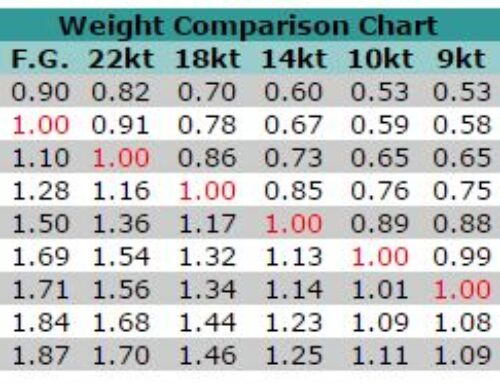Did you know diamonds aren’t completely colorless?
When most people think of diamonds they think of a colorless stone. Although most diamonds appear colorless to the unaided eye in a face-up position, the majority of diamonds have a body color that can be seen by an experienced grader in the proper environment. By far, the most common body color of a diamond is yellow. Diamonds with a tint of brown are also relatively common.
Generally speaking, the more colorless a diamond is the diamond the more valuable it is. In that regard, the color grade of a diamond is really a measurement of rarity. Rarity is directly linked to value. Just as with clarity, a color grade cannot determine the beauty of a diamond. Color preference and perception is a very personal and subjective thing. Look at the stone and decide for yourself if you like its color before you make decisions based on a letter of the alphabet.
Speaking of the alphabet, do you know your Diamond Color ABCs?
The Gemological Institute of America uses a diamond color grading scale ranging from “D” to “Z”. “D” is the top of the scale and represents a completely colorless diamond while “Z” is at the bottom. This “D” to “Z” scale is only used on diamonds that have body colors of yellow, brown and gray. Other colors (and yellows and browns past the “Z” grade) are considered fancy diamond colors and a different color grading system is used.
For most yellow and brown diamonds their value generally decreases as their grade moves down the scale toward “Z”. But once a diamond passes the “Z” grade it becomes more valuable and more expensive. Likewise, as diamonds move up the scale toward “D” their value increases.
GIA Color Grade Description
[table id=37 /]
Things you need to know about color grades:
Just like with clarity grading, a color grade only puts you into a range. For example, a “G” color diamond may in fact be very very close to being an “H” if it is low in the range, or very close to a “F” if high in a range. Let your eye determine if the color of a diamond is pleasing. Don’t let the grade influence your opinion of a diamond’s beauty.
Diamonds are graded in a face down position. This eliminates many of the brilliant reflections within the stone and helps the grade to see the stone’s true body color. When a diamond is turned face-up it almost always looks whiter or more colorless than it really is. Size is also a factor. Smaller stones, even in lower color grades, will tend to look more colorless while larger stones will appear more tinted.
Differences between color grades are extremely subtle and can only be determinedaccurately by comparing stones to known sample stones called Master Stones. GIA has one set of Master Stones that they use to grade diamond colors and before a diamond can be used as a master stone it must be compared to GIA’s Masters and perfectly match the color of one of the masters.






Leave A Comment